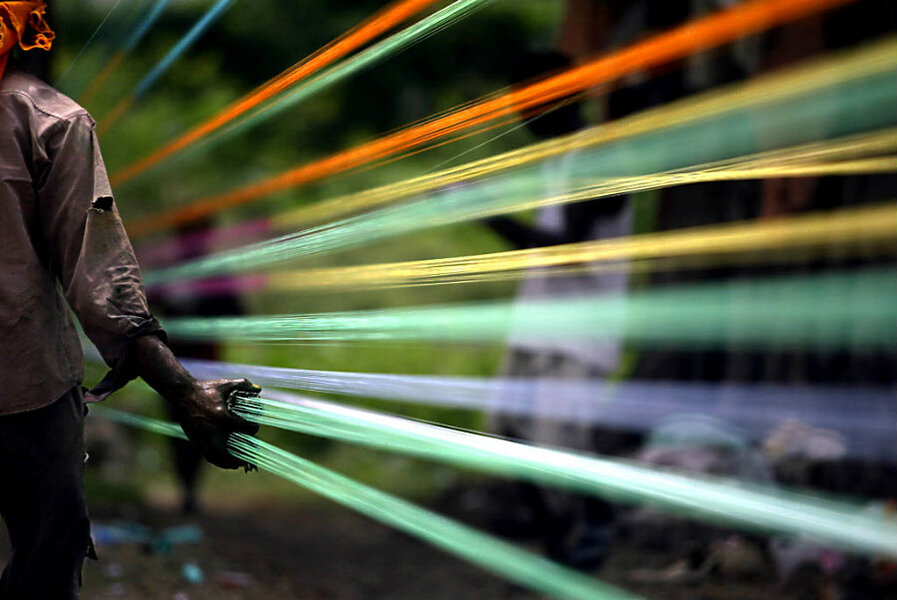Delhi bans dangerous kite string. But how to enforce the ban?
Loading...
Every year, thousands of Indians take to rooftops and terraces on the country’s independence day to kite fight, maneuvering their kites to cut through the thread of their opponents. But this pastime turned deadly in Delhi Monday when kite strings laced with glass unintentionally cut a motorcyclist and two toddlers who had been peering out of sunroofs.
Following the three deaths, the Indian capital outlawed Thursday the glass-coated string, known in India as Chinese manja. The city government issued an immediate ban on the production, sale, and storage of the string, and anyone caught with it could face a five-year jail term and a $1,500 (100,000-rupee) fine, according to Agence France Presse.
Environmentalists and others have petitioned Delhi and the country for years to ban the sharp thread. The three deaths and other injuries served as the final impetus for the ban in the capital, as well as helping to publicize the dangers of the string.
Manja – known as “cerol” in Brazil and “hilo curado” in Chile – is thread that is gummed, and covered in an invisible, powdered glass or shards. The string is turned dangerously sharp to slash other kites out of the sky. Kite fighting – made known to many Westerners by the 2003 novel “The Kite Runner" by Afghan writer Khaleed Hosseini and the 2008 film made from the book – is enormously popular throughout the Indian subcontinent, as well as in South America, and parts of the United States.
As manja has increased in popularity in India, environmentalists and others have called on officials to ban the thread. In Delhi, Zulfikar Hussain petitioned the High Court in May to ban manja before the country’s independence day. Mr. Hussain referenced the 15 deaths of people the use of the thread contributed to over two years, as well as the thousands of birds it has killed or injured, according to The Indian Express.
During the 2014 kite-flying festival in Ahmadabad, Gujarat, to celebrate the onset of spring, the Jivdaya Charitable Trust (JCT), an animal welfare NGO, said it attended to 2,394 injured birds, 490 of which died. Amid demands from environmentalists and concerned Indians, Mumbai was one of the first cities to ban the string in 2009. Other Indian cities that have banned the string include Jaipur, Bareilly, and Amritsar, according to The Guardian.
In Delhi, the court agreed with Hussain earlier this summer, instructing the city to carry out the ban. But it appears bureaucracy delayed this process until it was too late.
Delhi’s Deputy Chief Minister Manish Sisodia alleged the notification for the ban sat on the desk of the environment secretary, Chandraker Bharti, for five days. In a letter to Delhi’s lieutenant governor Wednesday, Mr. Sisodia encouraged Bharti be disciplined for “gross negligence."
Yet, it’s unclear how much the court-ordered ban would have stopped the prevalence of manja throughout Delhi. Contrary to its name, the sharp thread is manufactured in India, not China. Police suspect shops will continue to buy and sell the thread, according to The Indian Express.
Kite flying (and fighting) is embedded in the culture of certain parts of India, according to The Guardian. In Gujarat, kite flying “cuts across religious differences in arguably one of the most polarized states of India.”
“Families usually spend their entire day on the terraces and rooftops,” writes Elizabeth Soumya for The Guardian.
In Chile, where kite fighting is also popular, banned the thread in 2013.
In Delhi, police are unsure they will be able to trace the threads that killed the two toddlers and motorcyclist to the kites' owners or the shops that sold them. But the deaths will likely renew calls for all of India to follow Chile and ban the thread completely.







